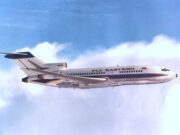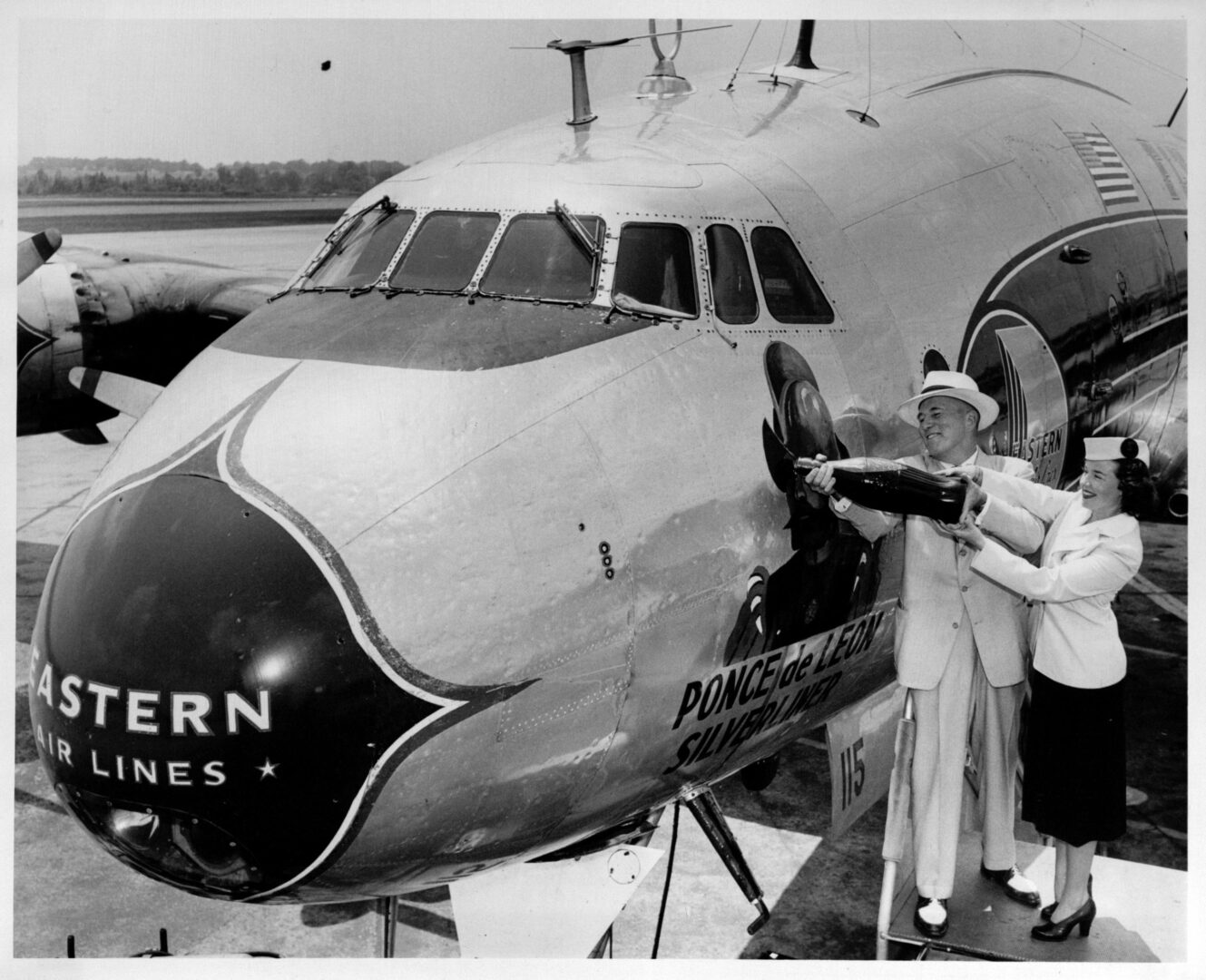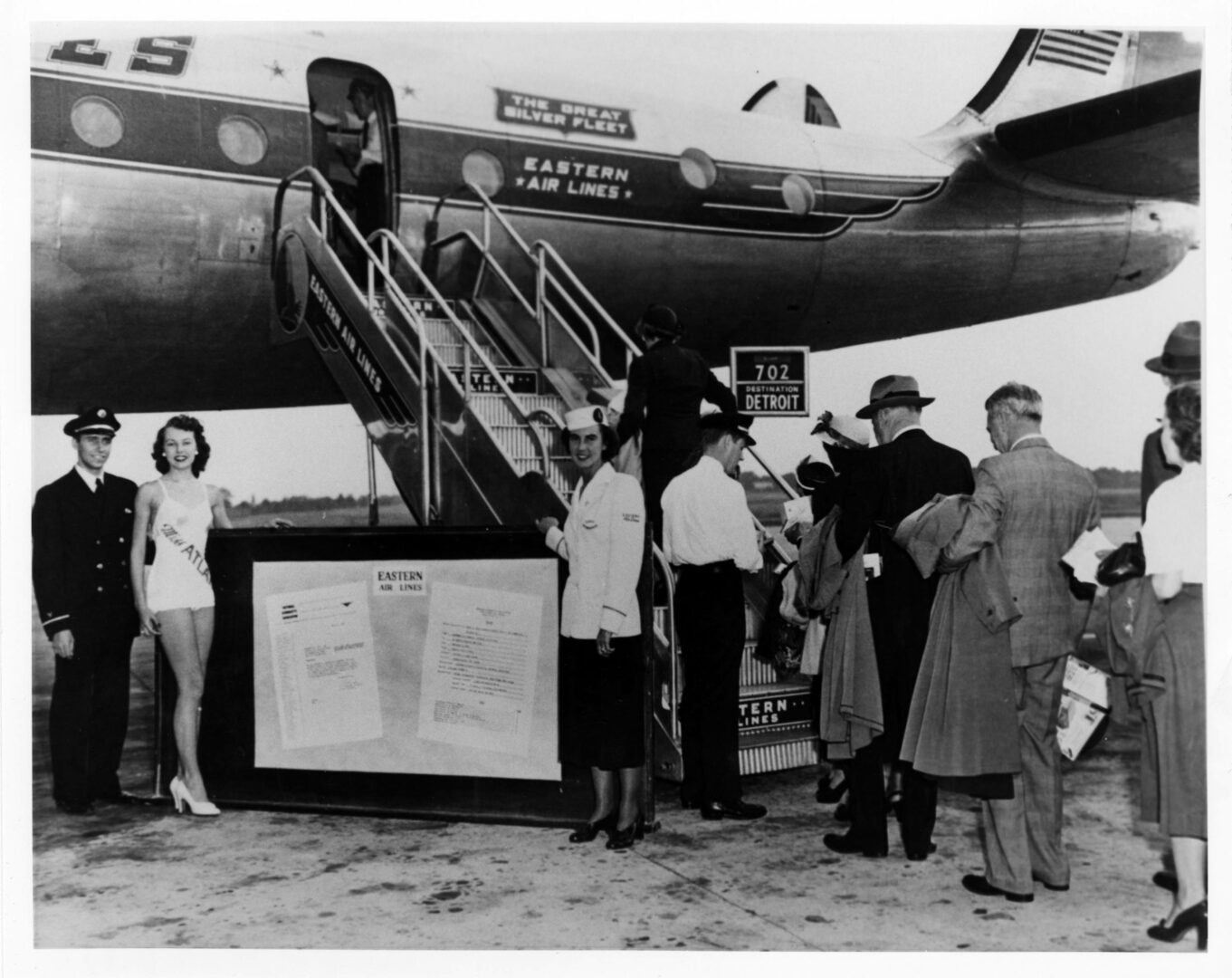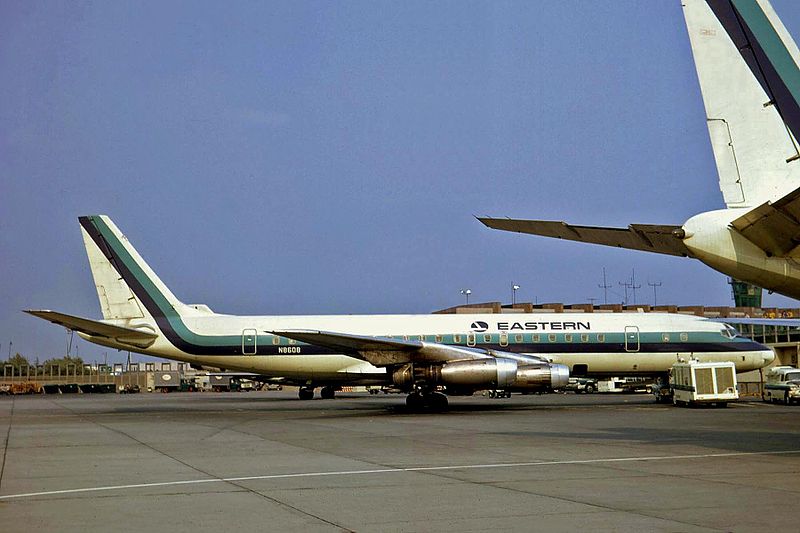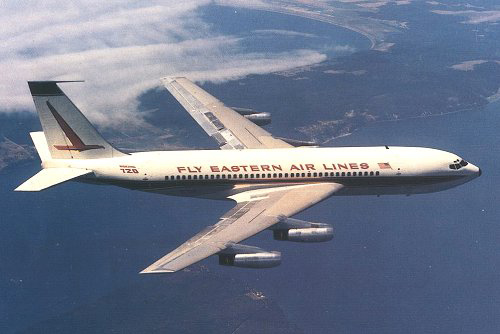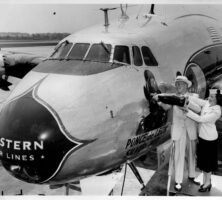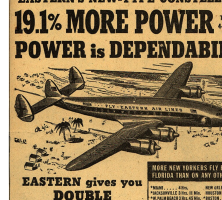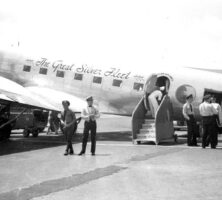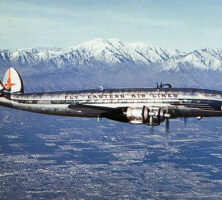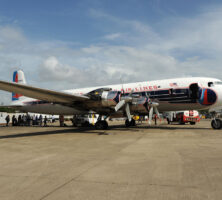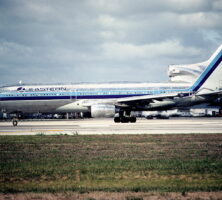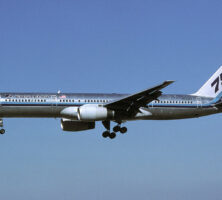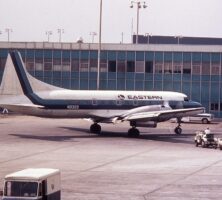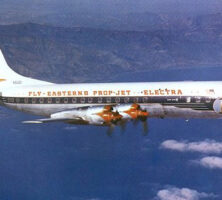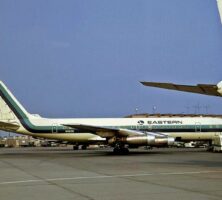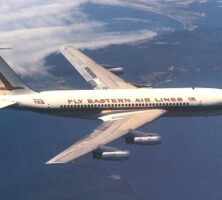Eastern Air Lines began in the late 1920s as Pitcairn Aviation, a small carrier in Philadelphia, Pennsylvania, that earned its income from the transport of airmail under U.S. government contract. During the 1930s the air line became a dominant carrier on the New York–Florida route via Atlanta. Eastern made a successful transition to the jet age in the 1960s, but during the next decade labor conflicts, the rising cost of fuel, and debt incurred from purchasing new airplanes began a downward spiral for the company. The deregulation of the airline industry, along with other troubles, led to the liquidation of Eastern Air Lines in 1991.
Early Years
In 1927 Pitcairn Aviation, a tiny carrier owned by Harold F. Pitcairn, received government contracts to carry airmail along an “eastern route” that connected New York to Florida via Atlanta. In 1929 Clement Keys, the owner of North American Aviation, purchased Pitcairn, and in 1930 he changed the name to Eastern Air Transport. A year later, the fledgling company added passenger service along a route that connected sixteen Eastern Seaboard cities, including Augusta and Savannah.
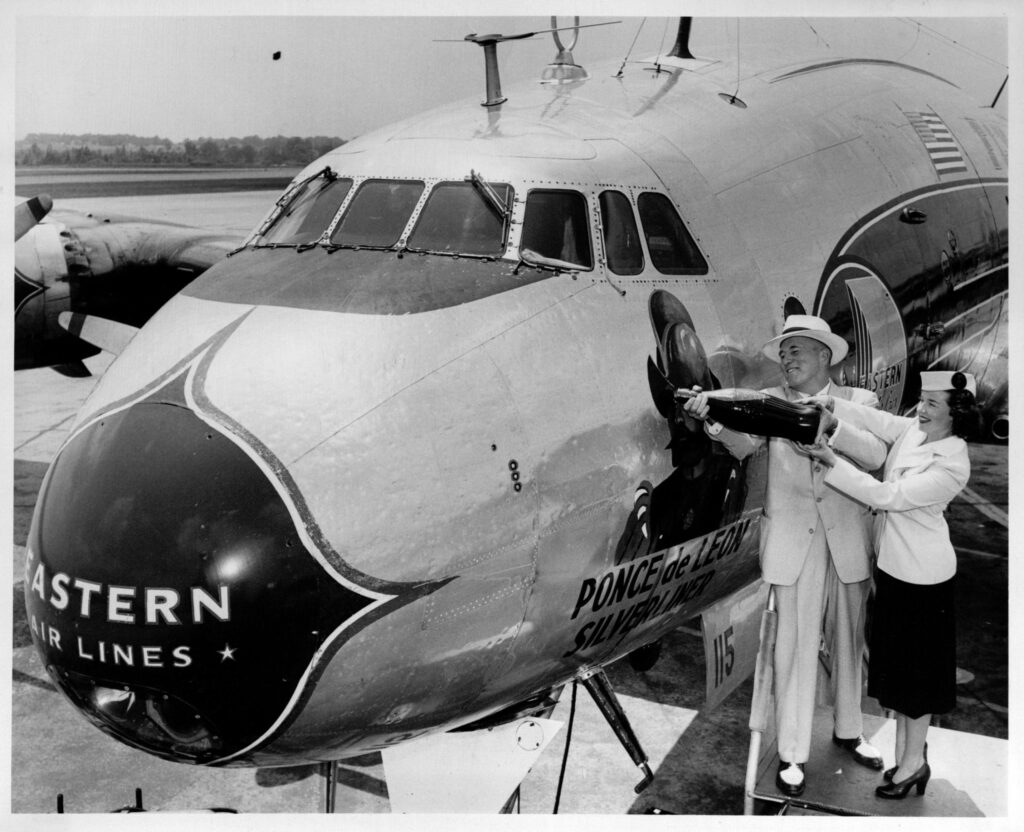
Eastern’s fortunes continued to improve when the government in 1934 awarded new airmail contracts to the company, now known as Eastern Air Lines. The new contracts added to the company’s eastern service with the addition of a Chicago–New York route, and a New York–New Orleans, Louisiana, route via Atlanta. Eastern’s route system, a product of the national airmail network subsidized by the federal government, ensured it an early place as one of the “Big Four” (with United, TWA, and American), whose dominance of the airline industry would last for almost fifty years. Eastern also helped open Florida as a prime national vacation destination, funneling passengers from the colder climes of the Northeast and Midwest to its resort cities.
Captain Eddie Rickenbacker Joins Eastern
Eddie Rickenbacker, a World War I (1917-18) fighter ace and a widely recognized figure in the United States, assumed the office of vice president of North American Aviation in 1933 and was named general manager of Eastern in December 1934. In 1938 Rickenbacker purchased Eastern Air Lines and became its president and general manager, a position he would hold until he stepped down in 1959.
Typical of the early Big Four, Eastern reflected the dominance of a strong leader whose personality imprinted itself on the organization. Rickenbacker’s tenure was stormy at times. His management style was tough and hands-on, earning him enemies along with friends. He instituted several far-reaching improvements that would ensure Eastern’s continued rise to dominance in later decades, highlighted by an economical and efficient approach to operations that left him in firm control of expenditures. His addition of a new “Silver Fleet” of Douglas DC-2s and DC-3s thoroughly modernized the company’s passenger service by the eve of U.S. involvement in World War II (1941-45). With the amount of government subsidies for airmail service declining after 1934, Rickenbacker accomplished the significant stroke of making Eastern the first national airline to turn a profit on passenger operations alone.
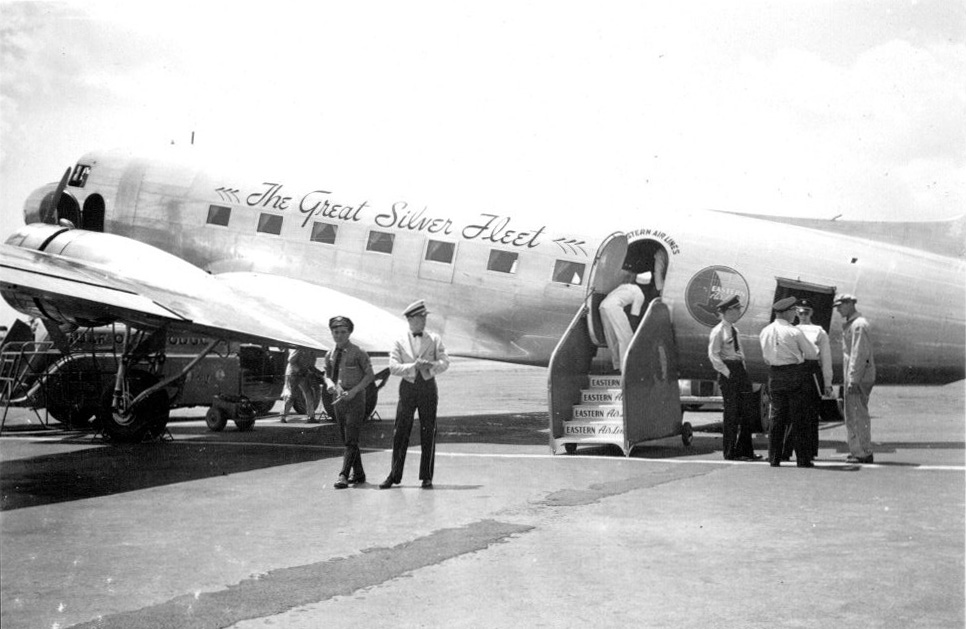
The Postwar Era: Winds of Change
World War II saw Eastern, like other airlines, detailing part of its airline fleet to the armed services. After the war Eastern’s fortunes rose with the growing popularity of commercial air service. Rickenbacker led the way in making the transition to new, efficient postwar airplanes. He began by purchasing the Constellation, a popular tritailed four-engine passenger plane developed by the Lockheed Corporation (later Lockheed Martin) for the military. He added the Douglas DC-4, the Douglas DC-6, and in 1953 the most advanced four-engine plane of its day, the Douglas DC-7.
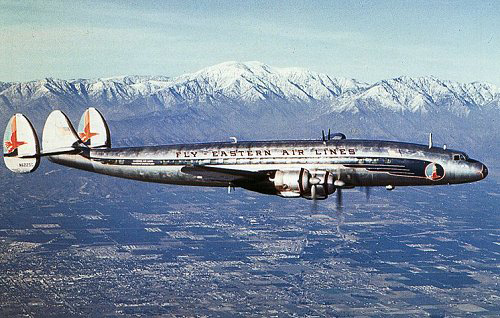
In 1956 Eastern merged with Colonial Airlines and gained new routes to Bermuda, Canada, Mexico, and various New England cities. Though the company located its headquarters in Miami, Florida, Atlanta’s central location on the north-south and north-southeast route map made Hartsfield International Airport (later Hartsfield-Jackson Atlanta International Airport) Eastern’s busiest hub. Combined with Delta Air Lines, whose home base was Atlanta (and with whom it competed), Eastern helped fuel Atlanta’s economy, adding thousands of jobs. Eastern, with Delta, was an element in Atlanta’s continued rise as the transportation and commercial capital of the South.
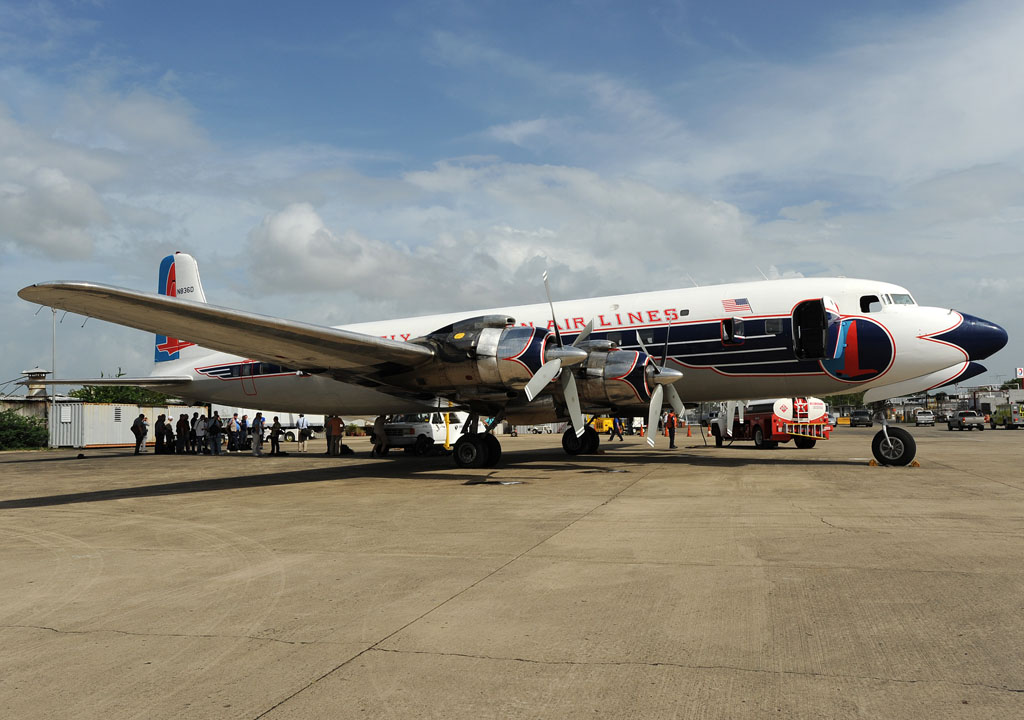
Rickenbacker’s management style at times worked against the company’s interests, and some of the seeds that would trouble the company in later years were sown during his tenure. Eastern was less successful than other airlines in winning new routes from the Civil Aeronautics Board, the New Deal agency charged with regulating airline route structures and fares. And Rickenbacker was not as farsighted as some in recognizing that jet aviation was the wave of the future. Eastern also gained a reputation as a no-frills airline; although this reduced the company’s expenditures, it detracted from the glamour that was part of an airline’s marketing and promotion, and hurt the company’s image. With the company experiencing a financial slide, Rickenbacker was forced out of Eastern in 1959.
Eastern in the Modern Era
A succession of company leaders followed Rickenbacker’s departure. They speeded the transition to jet service and in 1961 inaugurated a first in the airline industry: the air shuttle connecting Boston; Newark, New Jersey; Washington, D.C.; and New York City. The shuttle offered continuous hourly service, and all passengers were guaranteed a seat without reservations.

Eastern also underwent a facelift that gave the company a more polished image: aircraft were refurbished and a new color scheme was adopted; flight attendants and pilots received new uniforms; and such services as baggage handling, reservation services, and in-flight amenities were greatly improved.
Flight Safety
Eastern Air Lines’ enviable flight-safety record declined after three air disasters in the decade beginning in 1965. That year, an Eastern Constellation collided in midair with a TWA jet near Danbury, Connecticut. Both planes managed to land, averting what would have been the world’s worst aviation disaster up to that time. (Four fatalities occurred on the Constellation, including that of the pilot, who died while attempting to rescue a passenger.) The collision catalyzed the move to use computers for tracking civilian aircraft more efficiently in the increasingly crowded skies.
In 1972 an Eastern TriStar airliner crashed in the Everglades of Florida, killing ninety-four passengers and five crew members. While preparing for a nighttime landing, the flight crew observed an instrument panel warning light that indicated a problem in the extension of the nose gear. After aborting the landing, the crew became so preoccupied with locating the source of the problem that they neglected to notice the plane’s gradual descent into the ground. A television movie about the crash appeared in 1978, based on the book The Ghost of Flight 401 by John G. Fuller.
In 1975 an Eastern Boeing 727 crashed on landing at John F. Kennedy International Airport in New York City, killing 113 people. The official cause of the accident was wind shear, a phenomenon that affects the lifting capacity of an airplane’s wing, and that can occur in severe weather conditions.
Deregulation and Eastern’s Downfall
In 1975 another aviation hero, NASA astronaut Frank Borman, became chief executive officer of Eastern. By this period the company already had begun to encounter problems that would eventually throw it into financial crisis. With debts incurred by the purchase of costly new jet equipment in the 1970s, rising fuel costs, and a highly paid unionized workforce, Eastern found itself by 1983 precariously close to defaulting on its loans. The airline deregulation law of 1978 aggravated its delicate position, forcing Eastern into a competitive low-fare environment in which its high cost of operation put the airline at a decided disadvantage. Its all-important Atlanta hub placed it in direct competition with Delta Air Lines, a more profitable company that avoided labor wars and built a far-reaching route system through the acquisition of other carriers. When Borman failed to obtain a needed pay concession from the machinists’ union in 1985, Eastern was ripe for takeover.
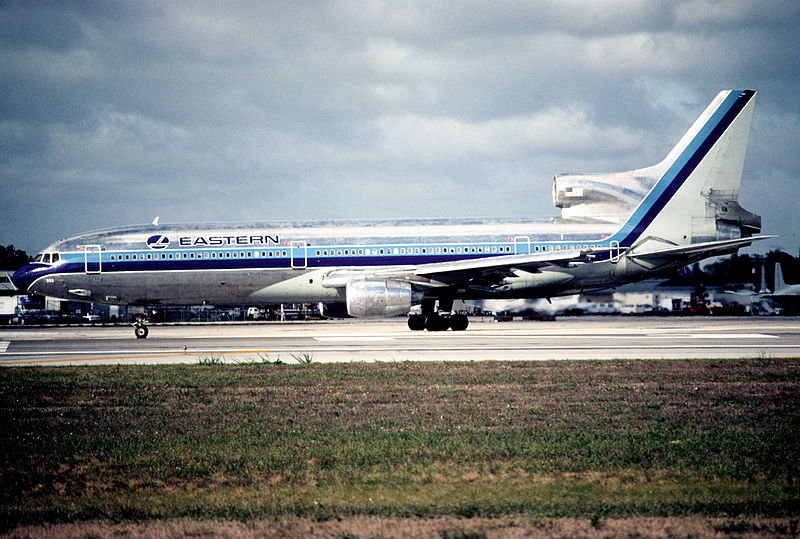
The businessman Frank Lorenzo flourished in the deregulated environment of the early 1980s. As the owner of several airlines, he earned a reputation as a confrontational, anti-union CEO who knew how to carve out a profitable niche for low-fare, low-cost carriers. He took advantage of new changes in federal bankruptcy law that allowed a company in bankruptcy to continue its operations unimpeded by creditors while undergoing reorganization.
In 1986 Lorenzo purchased Eastern for $615 million. A machinists’ strike in 1989 gave him the opening he needed for pushing Eastern into bankruptcy, allowing him to begin a reorganization. In just this fashion he had remade Continental Airlines into a profitable company. Eastern’s course was different, however. Lorenzo sold off Eastern’s profitable routes (real estate mogul Donald Trump bought the air shuttle), its prized reservation system, and some of its newest jets to other companies retained by Texas Air, another of Lorenzo’s holdings. Despite Eastern’s struggle to remake itself, its capacity to compete further eroded. The end came in 1991, when its assets were liquidated. Thousands of employees—many in the Atlanta area, where Eastern had a historic stronghold—were out of a job.
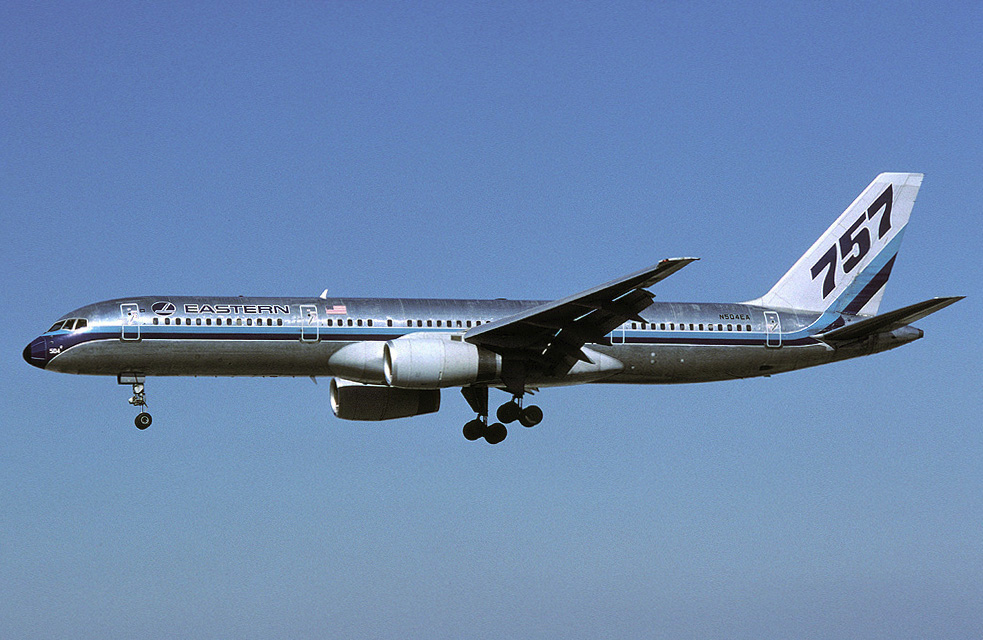
The Future of Domestic Air Travel: Atlanta’s Stake
Although Eastern’s fate cannot be attributed to deregulation alone, clearly the new competitive environment changed the operating rules. Within a few years of Eastern’s demise, Pan American and TWA followed—two other giants whose dominance depended upon the pre-1978 climate of protection regulated by the Civil Aeronautics Board, and whose histories can be traced back to the 1930s.
The long-term consequences of airline deregulation are still unclear. For consumers, it has made air travel much cheaper (though less glamorous), while the emphasis on safety has never been higher. The unregulated environment has also become a lure for entrepreneurial, consumer-oriented ventures. The same trends, however, have proved to be a disadvantage to the long-time major carriers, which have been forced to offer low-fare options even as the costs of running an airline have risen. Since the disruption of air travel following the September 11, 2001, terrorist attacks in New York City and Washington, D.C., several national carriers have inched closer to default.
How the nation balances the advantages and disadvantages in the current competitive structure of U.S. domestic air travel is one of the big question marks of the future. Because Hartsfield-Jackson International Airport and the city of Atlanta play so prominent a role in domestic air transport, their stake in the outcome is considerable.
In 2016 the Southern Labor Archives at Georgia State University debuted the Eastern Air Lines Digital Collection.


